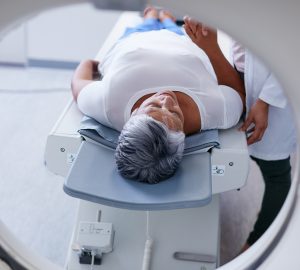As office ergonomics continue to transform, standing desks have emerged as a prominent fixture in many modern workspaces. These desks, which allow a person to stand up comfortably while working, have become symbolic of a movement towards healthier working habits. With the rise of sedentary jobs, the adverse health implications of prolonged sitting have gained attention, giving momentum to the adoption of standing desks. Their primary goal? To foster an environment where employees can simultaneously work and prioritize their well-being.
The surge in popularity of standing desk types isn’t just a fleeting trend; it’s underpinned by solid scientific research that highlights numerous health advantages of using them. Let’s delve into the specifics.
Physical Benefits for Your Body When Using an Adjustable Desk
Posture: Traditional desks often lead to a slouched posture, which can result in back and neck pain over time. Standing encourages a straighter posture, alleviating potential musculoskeletal problems. When set up correctly, a standing desk promotes a neutral position where the head, neck, and spine are aligned.
Reduced Risk of Heart Disease: Studies have shown that prolonged sitting can increase the risk of heart disease. Standing helps improve circulation and can lead to a slightly higher heart rate, promoting cardiovascular health.
Weight Management: Standing burns more calories than sitting. While the difference might seem minimal hour by hour, over weeks and months, it can contribute to weight management. It’s a simple way to increase daily energy expenditure without a structured workout.
Mental Benefits and Better Productivity
Increased Alertness: Standing can lead to improved circulation, ensuring that the brain receives a consistent supply of oxygenated blood. This can translate to increased alertness and focus during work tasks.
Improved Mood: Engaging the muscles and maintaining an upright posture can release endorphins, the body’s natural mood enhancers. A study even found that standing desk users reported less stress and fatigue than those who remained seated all day.
Enhanced Productivity: With the combined benefits of increased focus and improved mood, many users find that standing desks boost their productivity. Tasks may be completed more efficiently, and there’s often a reported increase in energy and drive.
Comparison: Standing Desk vs. Traditional Desk
The debate between standing desks and traditional desks goes beyond just preference, it encompasses a range of health and productivity considerations.
Physical Implications of Prolonged Sitting: Extended periods of sitting can strain the lower back, tighten the hip flexors, and can even contribute to conditions like chronic pain. Sitting for long hours is also linked with cardiovascular risks, obesity, and metabolic syndrome.
Energy Expenditure Difference: Standing consumes more energy than sitting. Over the course of a day, this can account for a notable difference in calories burned, contributing to weight management and overall health.
Impact on Daily Work Tasks and Efficiency: While both desk types can support focused work, many people report feeling more active and engaged while standing, which can potentially lead to increased productivity and efficiency.
Implementing a Standing Desk: Best Practices
Transitioning to a standing desk should be a thoughtful process to maximize its benefits.
Starting Slow: Balancing Sitting and Standing Times: It’s essential not to make a sudden shift. Begin with short standing intervals, gradually increasing them as you become more accustomed.
Correct Desk Height and Monitor Placement: Ensure that the desk height aligns with your elbows at a 90-degree angle, and the top of your screen is at or slightly below eye level. This prevents strain and promotes good posture.
Importance of Taking Breaks and Movement: Standing stationary for long periods isn’t the goal. Incorporate short walking breaks or stretching intervals to maintain circulation and flexibility.
Potential Challenges and How to Overcome Them
Adopting a new work routine can come with its set of challenges.
Initial Discomfort and How to Cope: It’s natural to feel some discomfort in the beginning, especially in the legs and feet. Use an anti-fatigue mat, and ensure you shift weight between legs regularly.
Footwear Considerations: The shoes you wear play a significant role. Opt for comfortable, supportive footwear, avoiding high heels or very flat shoes.
Adjusting to a New Work Routine: Remember, it’s a transition. You don’t have to stand all day. Listen to your body, adjust your routine accordingly, and find a balance that suits you best.
Incorporating a standing desk into your workspace can offer numerous advantages, but like any change, it requires a period of adjustment. By understanding the potential challenges and best practices, you can make the most of this health-forward office trend.
Standing desks, in the broader narrative of workplace well-being, underscore a significant shift towards health-conscious work environments. Their integration into workspaces speaks to the growing awareness of the drawbacks of prolonged sitting, from musculoskeletal strains to metabolic and cardiovascular concerns. Beyond just the physical benefits, standing desks can also play a role in enhancing alertness, mood, and overall productivity.
However, it’s essential to understand that standing desks are just one piece of the puzzle. True office wellness requires a holistic approach, considering not only our physical postures but also factors like mental well-being, work-life balance, and a supportive work culture. As we embrace standing desks, let’s also commit to cultivating a comprehensive environment where every aspect of employee health is valued and promoted. In this way, we not only enhance our immediate work experience but pave the way for long-term health and job satisfaction.









